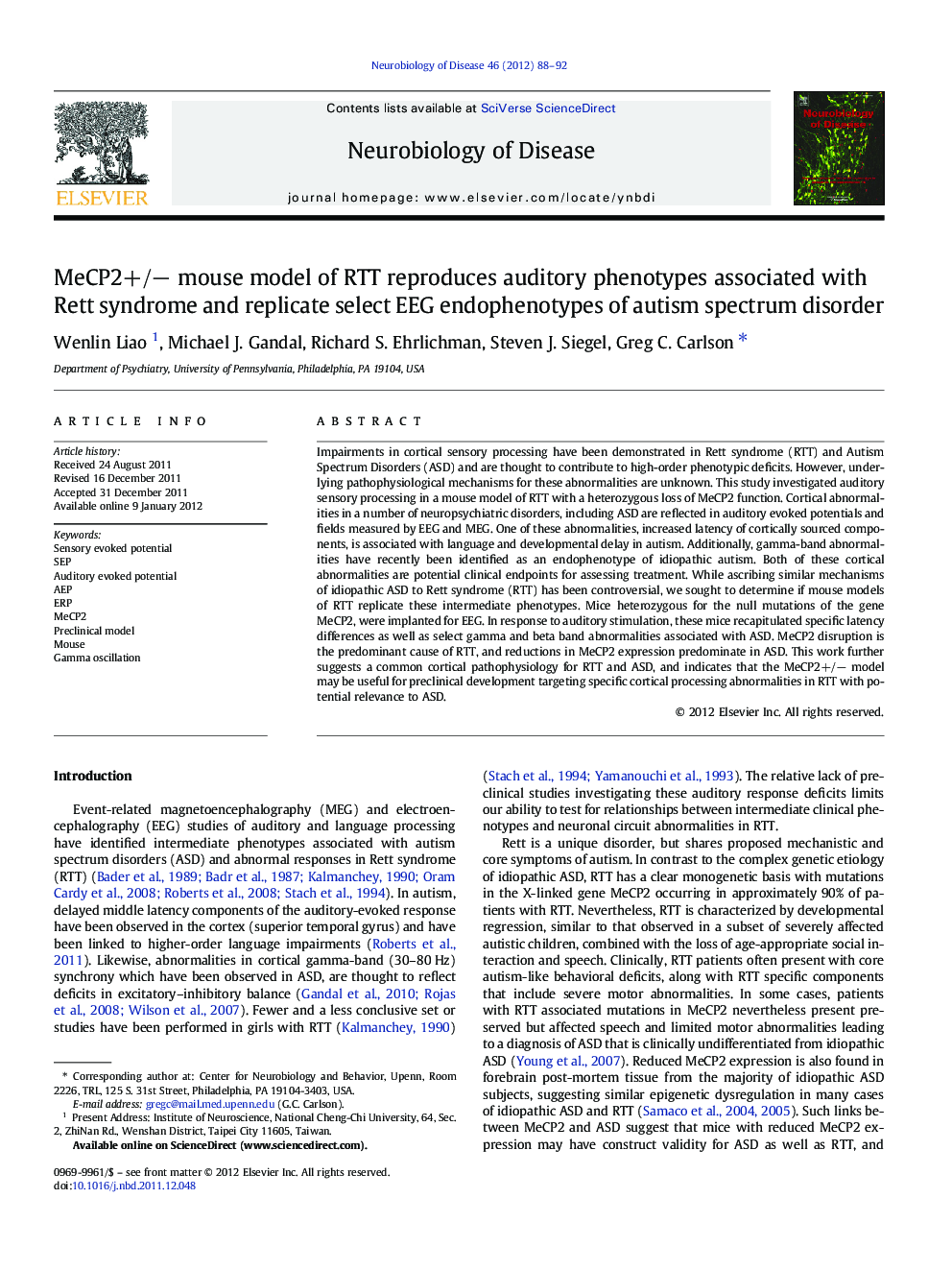| Article ID | Journal | Published Year | Pages | File Type |
|---|---|---|---|---|
| 3069488 | Neurobiology of Disease | 2012 | 5 Pages |
Impairments in cortical sensory processing have been demonstrated in Rett syndrome (RTT) and Autism Spectrum Disorders (ASD) and are thought to contribute to high-order phenotypic deficits. However, underlying pathophysiological mechanisms for these abnormalities are unknown. This study investigated auditory sensory processing in a mouse model of RTT with a heterozygous loss of MeCP2 function. Cortical abnormalities in a number of neuropsychiatric disorders, including ASD are reflected in auditory evoked potentials and fields measured by EEG and MEG. One of these abnormalities, increased latency of cortically sourced components, is associated with language and developmental delay in autism. Additionally, gamma-band abnormalities have recently been identified as an endophenotype of idiopathic autism. Both of these cortical abnormalities are potential clinical endpoints for assessing treatment. While ascribing similar mechanisms of idiopathic ASD to Rett syndrome (RTT) has been controversial, we sought to determine if mouse models of RTT replicate these intermediate phenotypes. Mice heterozygous for the null mutations of the gene MeCP2, were implanted for EEG. In response to auditory stimulation, these mice recapitulated specific latency differences as well as select gamma and beta band abnormalities associated with ASD. MeCP2 disruption is the predominant cause of RTT, and reductions in MeCP2 expression predominate in ASD. This work further suggests a common cortical pathophysiology for RTT and ASD, and indicates that the MeCP2+/− model may be useful for preclinical development targeting specific cortical processing abnormalities in RTT with potential relevance to ASD.
►We assayed sensory evoked potentials in a female mouse model of Rett syndrome. ►Auditory evoked potentials demonstrated increased N1 and increased P2 latency. ►Specific abnormalities were also found in gamma-band responses. ►These novel findings demonstrated a selective reproduction of ASD biomarkers.
